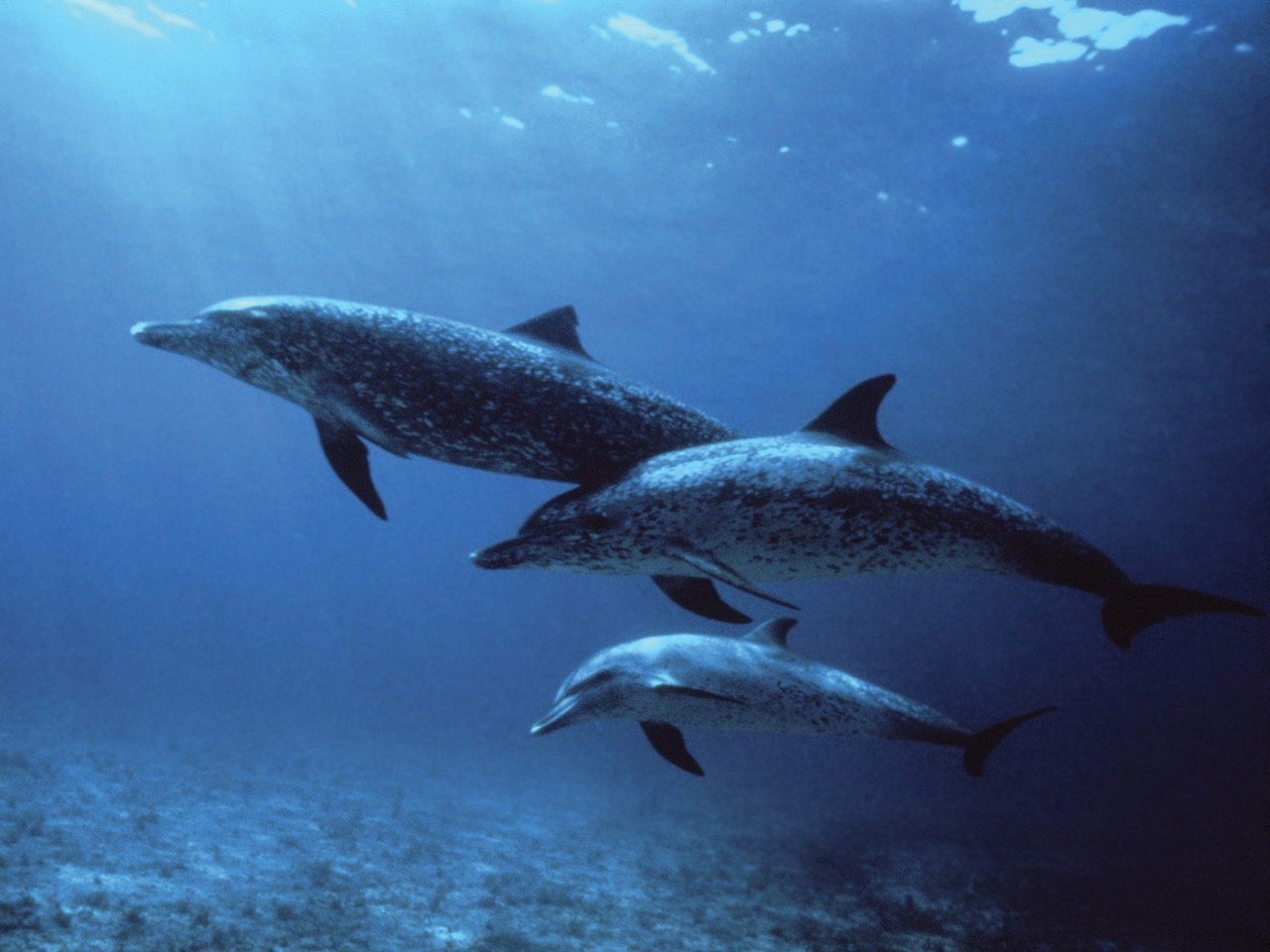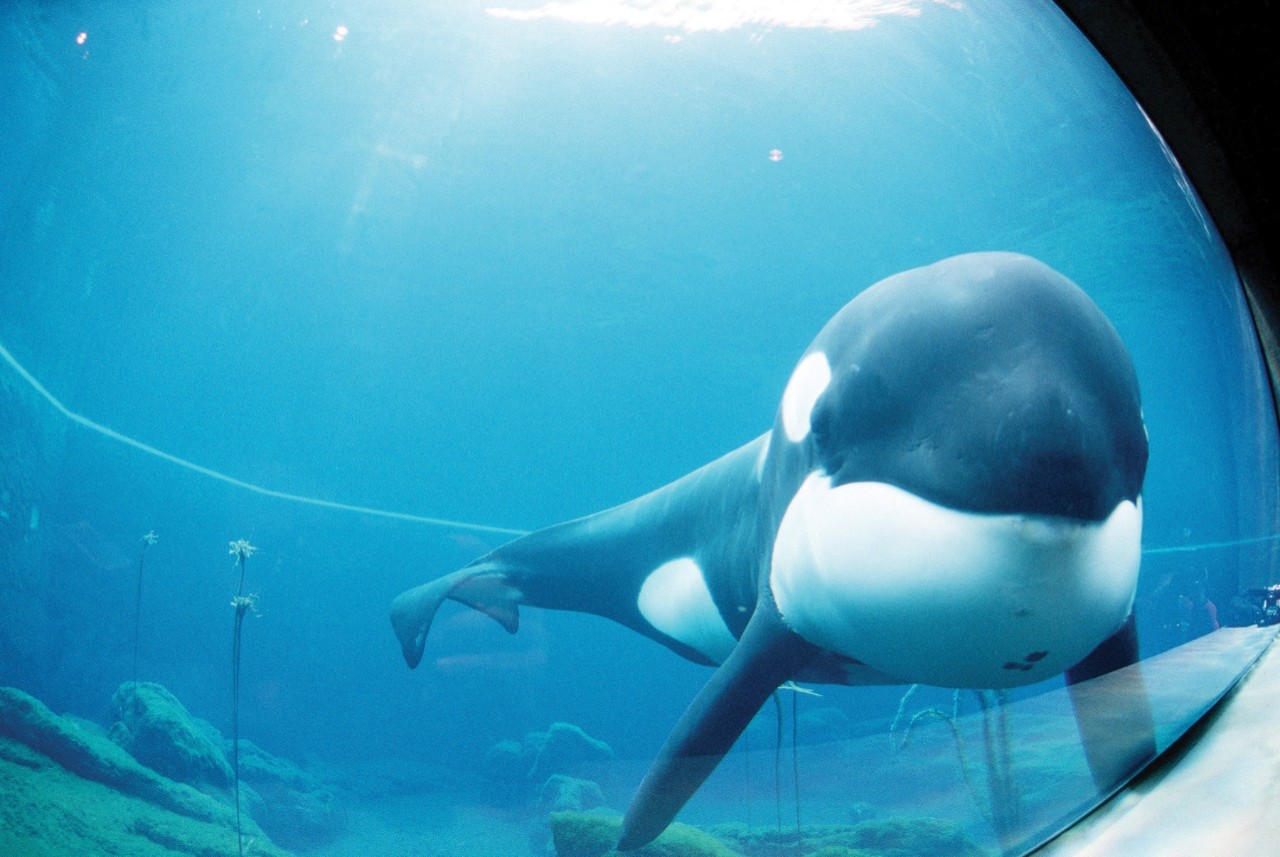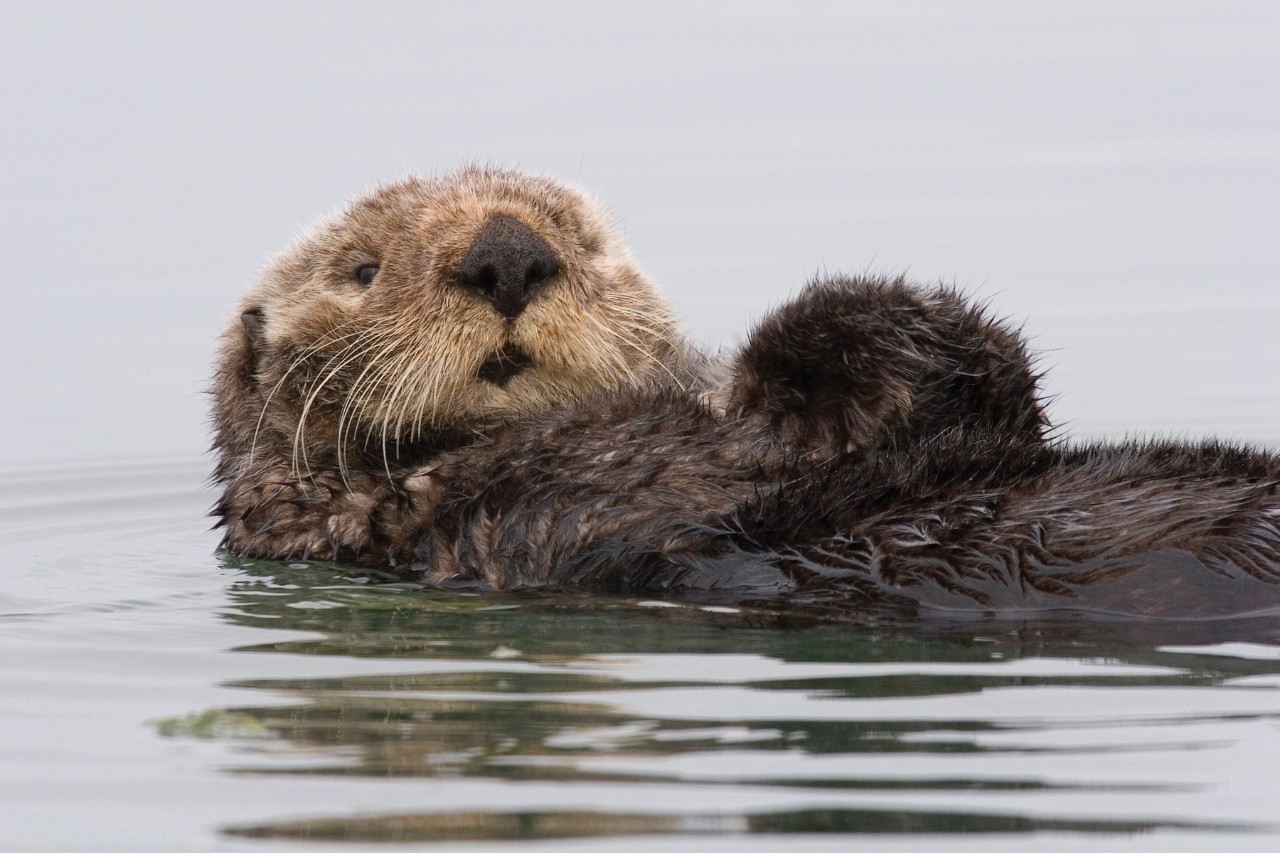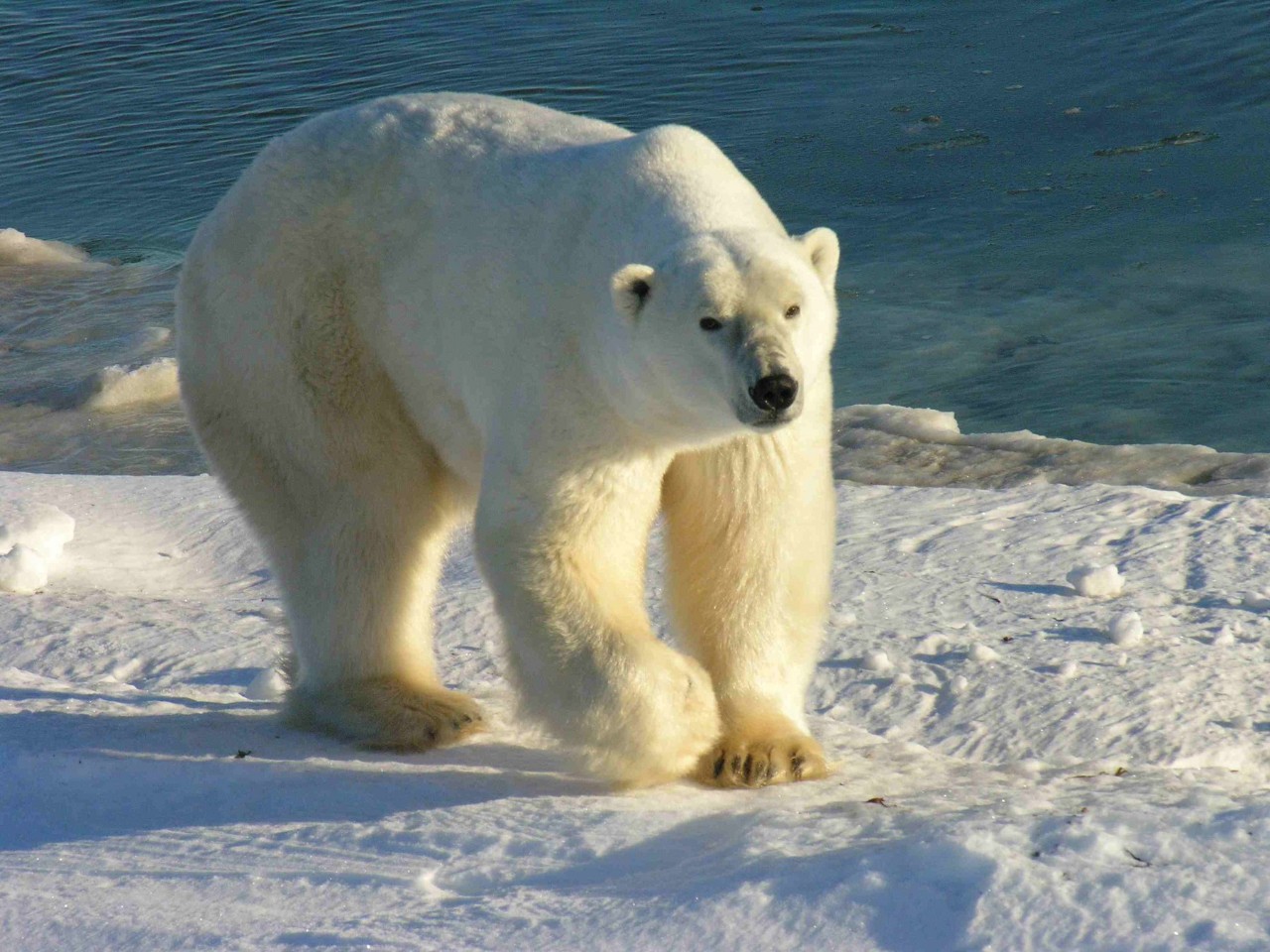The Skin They're In: U.S. Navy Diving Suits
Why Whales Don't Wear Wet Suits
Human skin provides minimal insulation compared to the adaptations that marine mammals have developed to retain their body heat. With thicker skin, thick fat (blubber), and fur, sea mammals can live and swim comfortably in freezing water temperatures.
Click photograph for a larger image.
Skin
Human skin is only about 2 mm or 0.07 inches thick. But marine mammals possess much thicker skin - from 2 to 8 inches thick! This substantial layer helps them retain their body heat by insulating them against the cold.
Photo: Dolphins have different skin thicknesses depending on where they live. Colder environments mean thicker skin. Dolphin skin is 10-20 times thicker than land mammal skin.
Blubber
Sea mammals are insulated from extreme cold by blubber, a thick layer of fatty tissue that makes up to 50 percent of body mass. Blubber is thicker than normal fat tissue and significantly reduces the rate of heat loss. It also helps keep marine mammals' blood warm by heating the dense network of blood vessels that cover the blubber layer.
Photo: Some whale species dive as deep as 900 to 2000 feet where water temperatures are 20-37oF. Their extremely thick layer of blubber (3-20 inches, depending on the species) fully insulates and warms them.
Fur
Densely packed fur helps some sea mammals stay warm. Natural oils found in their fur repel water and trap tiny air bubbles. These bubbles create an additional layer of insulation between the animal's skin and the water.
Photo: Sea otters have 650,000 hairs per square inch of skin, the finest, densest fur of any animal. Because they do not have blubber like other sea mammals, sea otters depend on their fur to keep them warm.
Photo by Mike Baird.
Multiple Mechanisms
Most sea mammals combine these types of insulation to stay warm. Whales rely on thick blubber and very thick skin. Polar bears retain heat with thick hair, skin, and layers of fat.
Photo: Many marine mammals have thick skin that warms them by trapping air, but polar bear skin helps in a different way. Underneath their white fur, polar bears have black skin that absorbs heat from the sun.
Photo by Ansgar Walk.






